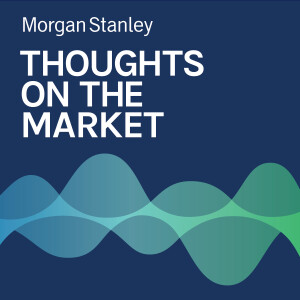
Our CIO and Chief US Equity Strategist explains how to make sense of the equity market’s narrow performance, and why stock picking takes on greater importance for investors.
----- Transcript -----
Welcome to Thoughts on the Market. I'm Mike Wilson, Morgan Stanley’s CIO and Chief US Equity Strategist. Along with my colleagues bringing you a variety of perspectives, today I'll be talking about the narrowness in breadth and why that supports our preference for high quality and defensive stocks.
It's Tuesday, June 25th at 11:30am in New York.
So let’s get after it.
I am fond of the saying that the economy is not the stock market, and the stock market is not the economy. Often, a strong economy is not good for stocks, while a soft one can lead to higher equity prices. This latter case is the classic late cycle period in which we find ourselves. More specifically, when the economy is slowing from previous tightening by the Federal Reserve, the equity market starts to get excited about the Fed reversing course, and it looks forward to loosening policy and valuations rise in anticipation. With price/earnings multiples and other valuation metrics now in the top decile, the question is when will valuations matter and begin to fall faster than earnings growth and lead to a meaningful correction?
At the stock level, this is already happening as illustrated by the weakest breadth since 1965. In other words, most stocks are seeing valuations fall more than earnings are rising. This is exactly why stock picking has become so important for equity investors to outperform the S&P 500. While this creates a great long and short opportunity, the list of longs has become harder to find and why the momentum in a few stocks continues unabated. This also syncs with our view for the past year that large cap quality is likely to continue to outperform until something material changes in the macro environment. I see three potential candidates to change this seemingly very stable and benign outcome for equity markets.
First, inflation and growth reaccelerate in a way that forces the Fed to reconsider rate hikes. Right now, that does not appear likely and why there is virtually no risk of such an outcome priced into either bond or stock markets. Such an outcome would likely lead to a broadening out of the equity rally to areas that have lagged persistently over the past 2 years—areas like small caps, lower quality consumer cyclicals, regional banks and transports. The S&P 500 would likely trade poorly under this scenario as higher rates would potentially weigh on valuations for the big winners.
Second, the liquidity picture deteriorates and money flows out of equities. A key risk in this regard relates to the funding of the extraordinary government deficit. A good way to monitor this risk is the term premium in the bond market which remains near zero. Should this change and the term premium rise like last fall, the decline in equities would likely be broad with few stocks doing well. This does not appear to be a concern at the moment given the liquidity provisions still in place.
The third possible risk is a growth scare that is substantial enough to turn bad economic data into bad news for equity multiples across the board. This is the most likely risk to upset the apple cart in our view. Under this outcome, large cap quality should continue to do ok on a relative basis, but defensives are likely to do better.
The economic growth surprises have been trending lower all year. So far, the S&P 500 has taken these weaker data in stride assuming bad economic data is still good for large cap quality stocks as the market looks forward to rate cuts from the Fed. Meanwhile, weaker indices and stocks have broken down with many now down on the year.
The bottom line is that the ongoing policy mix of heavy fiscal spending and tight interest rate policy is crowding out many companies and consumers in a waythat is unsustainable in our view. Investors have correctly recognized this outcome by bidding up the few stocks of the companies that are doing well in this environment. Until the bond market pushes back via higher term premium or growth slows down in a more meaningful way, we expect this narrow market performance to persist. As such, we continue to recommend a barbell of large cap quality growth with defensives while fading cyclicals and avoiding the temptation to play for a true broadening out until the macro regime makes a meaningful shift.
Thanks for listening. If you enjoy Thoughts on the Market, please leave us a review wherever you listen and share the podcast with a friend or colleague today.
More Episodes
 2024-07-16
2024-07-16
 2024-07-15
2024-07-15
 2024-07-11
2024-07-11
 2024-07-10
2024-07-10
 2024-07-08
2024-07-08
 2024-06-28
2024-06-28
 2024-06-27
2024-06-27
Create your
podcast in
minutes
- Full-featured podcast site
- Unlimited storage and bandwidth
- Comprehensive podcast stats
- Distribute to Apple Podcasts, Spotify, and more
- Make money with your podcast
It is Free
- Privacy Policy
- Cookie Policy
- Terms of Use
- Consent Preferences
- Copyright © 2015-2024 Podbean.com





